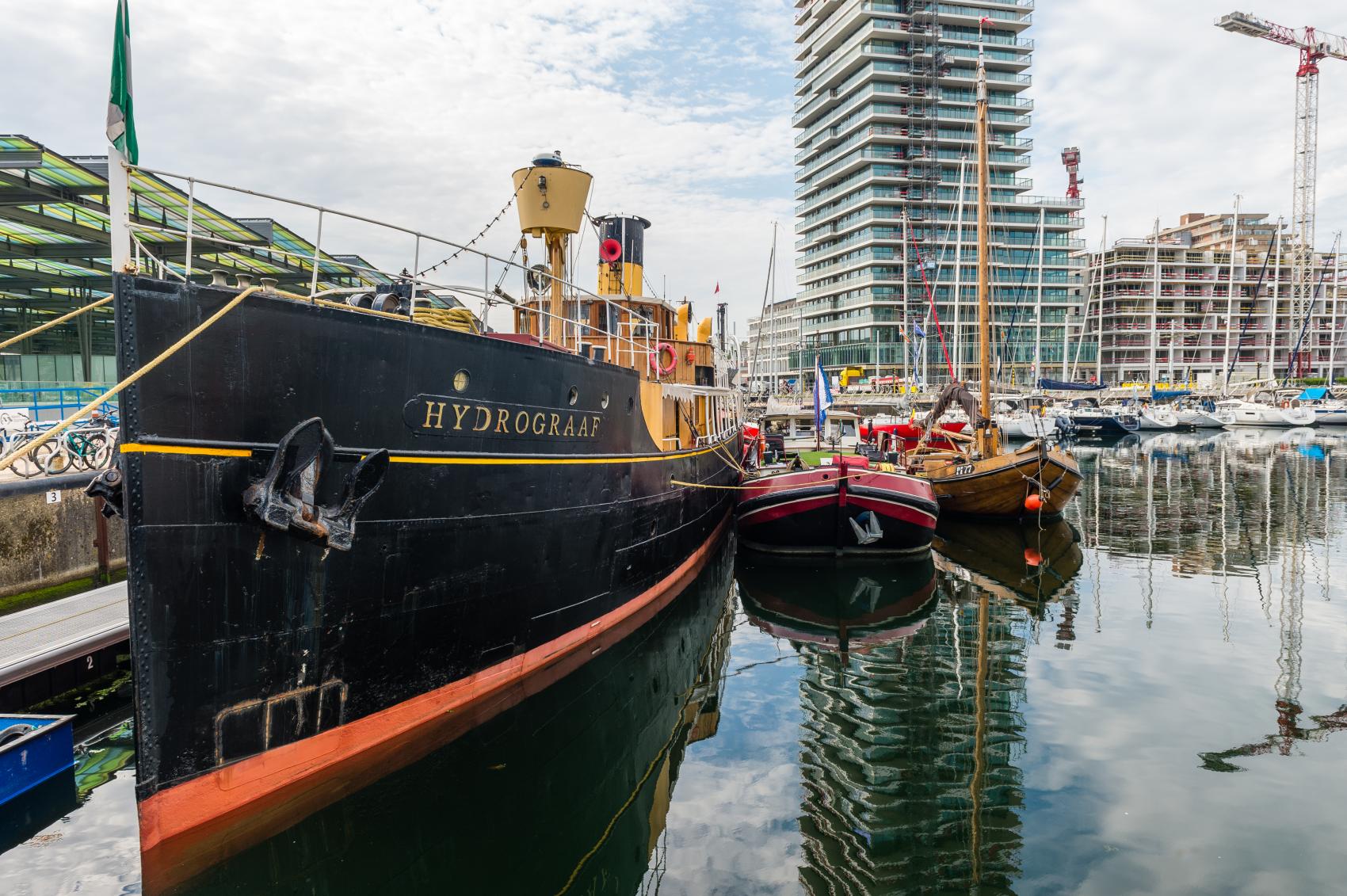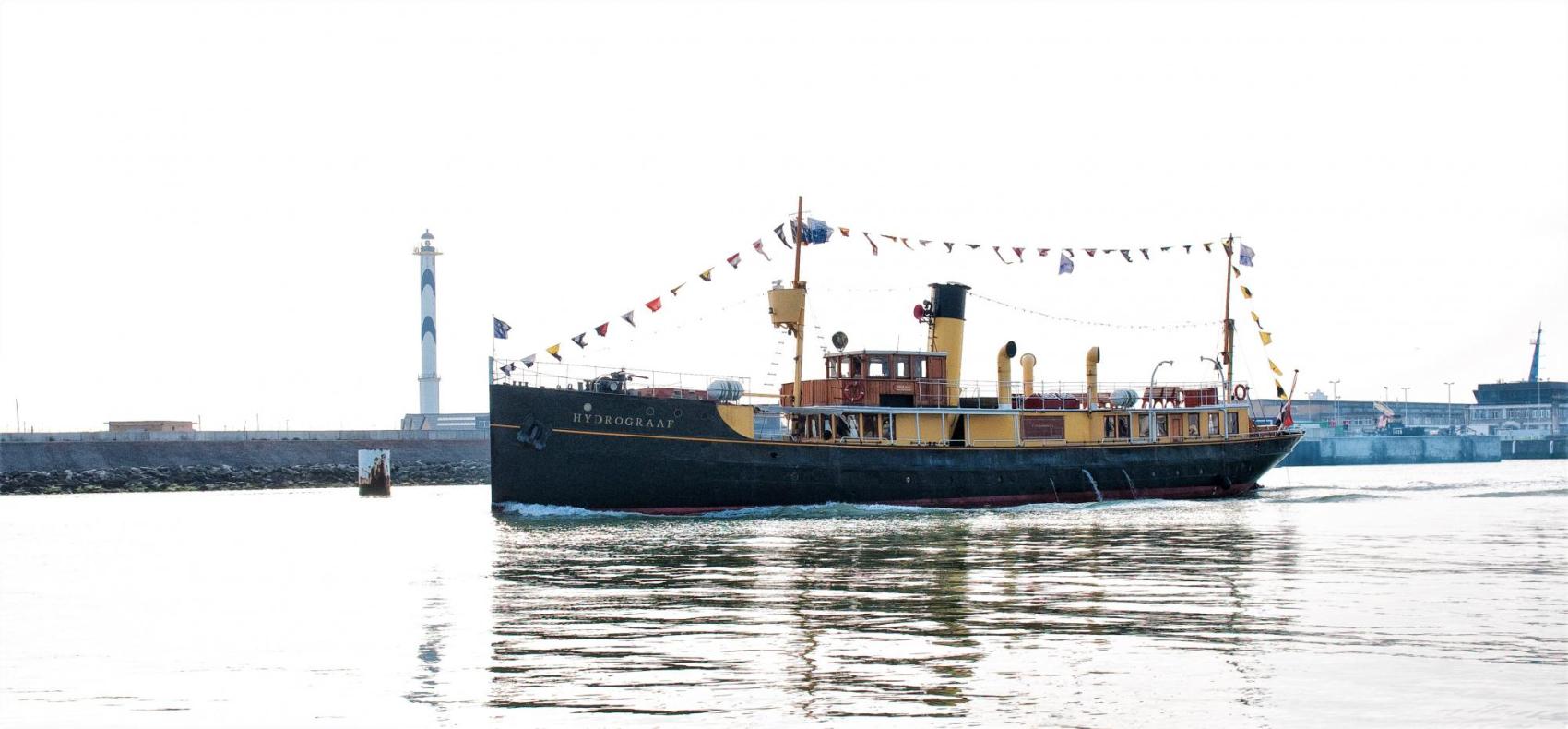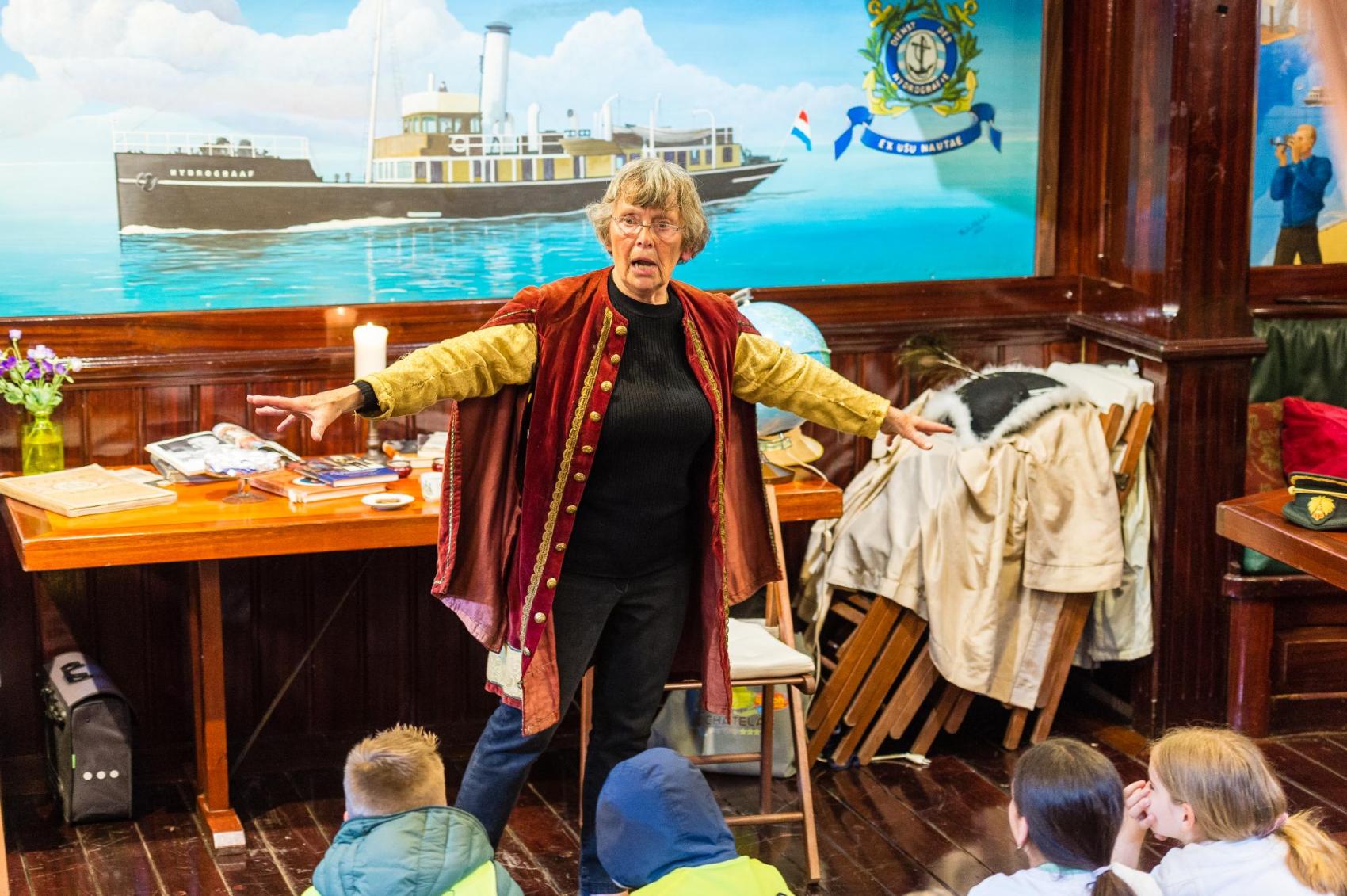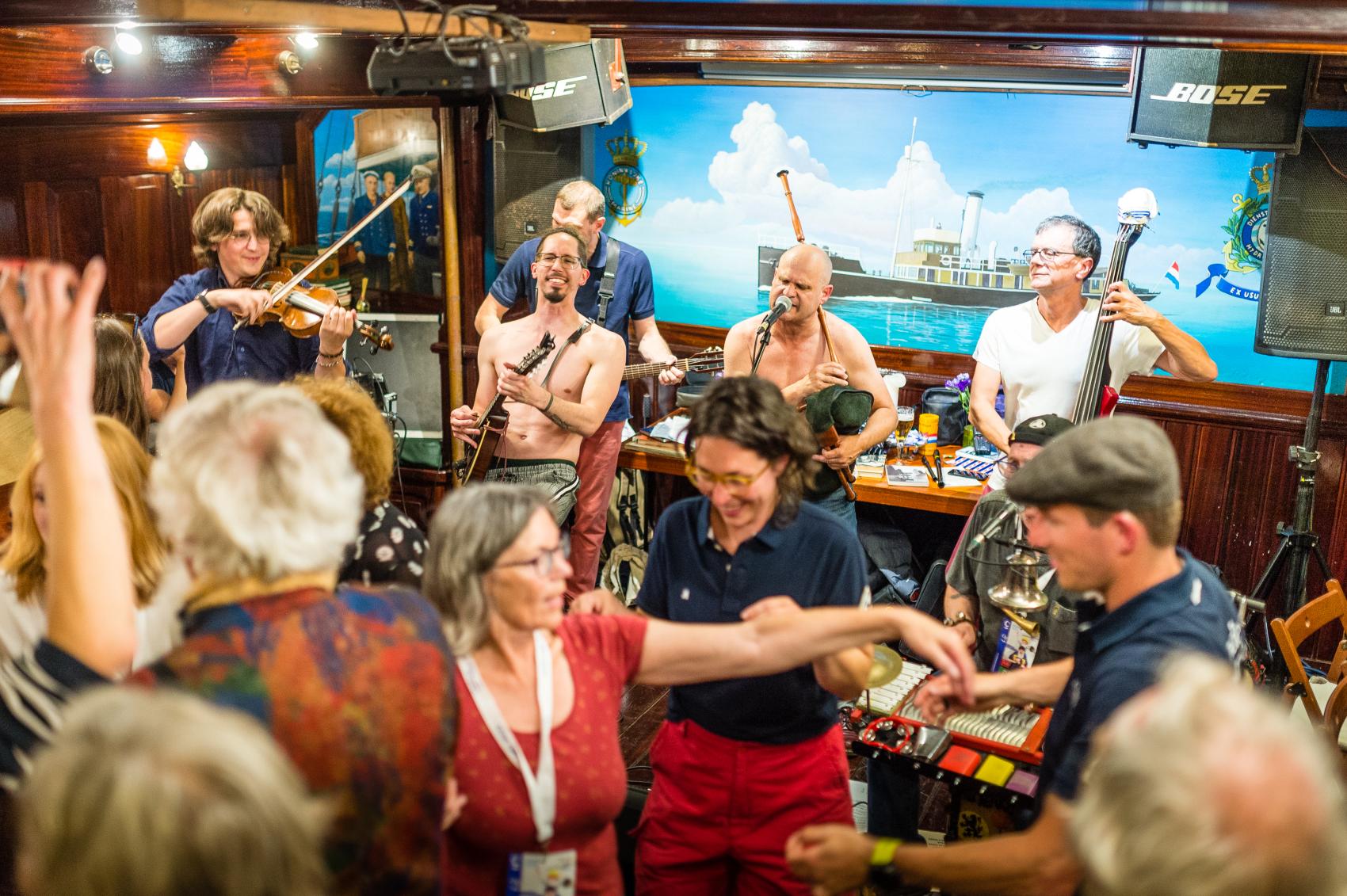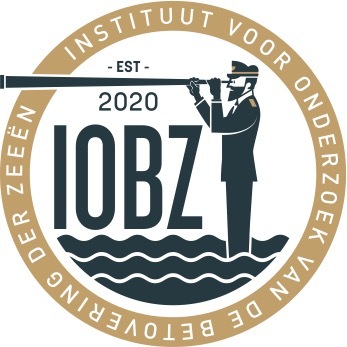The steamer of St. Nicholas
It is with great pleasure that we can announce the arrival of the former steamship ‘Hydrograaf’. It is quite an honour that the ship of Saint Nicholas will be presented at our festival. The ship will be moored in the Mercator Dock near the Vindictivelaan and will have free access! The most beautiful gift for the curator from St. Nicholas. Apparently, he and his team have all been very good this year.
Until 1962, the steamship ‘Hydrograaf’ was a hydrographic survey vessel of the Royal Netherlands Navy, which carried out measurements on the seabed. Thanks to a long record of service, it has been preserved in its original condition and is now a popular saloon steamer.
The ship was built in 1909-1910 by the Fijenoord Ship and Equipment Building Company in Rotterdam. The ship was laid down on 11 October 1909 and launched on 26 January 1910. As was customary at the time, it was a steamship with two coal-fired steam engines. It had a draught of only 1.80 metres, which made it perfectly capable of operating in the shallow coastal waters of the south-western Netherlands, the Southern sea and the Wadden sea.
On the 4th of May in 1910, the Royal Netherlands Navy took the ‘Hydrograaf’ into service. Most of the time, the ship was used as a survey vessel from April till October. Outside this period, it was impossible to work due to the weather conditions. For each season, the ship was officially put in and out of service. In the winter months, the ship usually stayed in Hellevoetsluis or in Willemsoord, Den Helder. The ship did not sail in the grey colours of the Navy, but had a black hull and yellow superstructure. In 1921, the ship was reinforced by ‘Eilerts de Haan’, built at the same shipyard.
The ‘Hydrograaf’ was used several times as a royal yacht during visits of Queen Wilhelmina, Prince Henry and Princess Juliana to places in the waters of South-Holland and Zeeland. In the stern, a cabin was furnished below deck for this purpose. During the royal visit to Zeeland in 1921, the party spent the night of 15 September on board the ship, which was moored in Vlissingen harbour. On 31 March and 1 April 1922, the ‘Hydrograaf’ took Queen Wilhelmina and Princess Juliana from Vlaardingen to Den Briel (Brielle) to attend the festivities surrounding the 350th anniversary of the capture of Den Briel by the Sea Beggars. During the royal visit to Zeeland from the 5th until the 8th of August 1924, the Hydrographer made the crossings Stavenisse-Zierikzee, Zierikzee-Middelburg (5 August), Veere-Kamperland, Kortgene-Wolphaartsdijk (7 August) and Hansweert-Walsoorden, Terneuzen-Breskens and Breskens-Vlissingen (8 August). Meanwhile, Crown Prince Willem-Alexander and many other celebrities have sailed with the ‘Hydrograaf’.
In May 1940, the ship left Flushing for England. During the Second World War, it was used as a boarding ship for the minesweeping service. On September 25, 1943, the ship arrived in Harwich to be used as a depot ship. After the conquest of Zeeuws-Vlaanderen the ship came at the disposal of the Commander in Zeeland in October 1944. It immediately served again as a survey vessel to better map the important access to the port of Antwerp.
After the war, the ship was put back into service for the Hydrographic Service. As such, it was scrapped by the Royal Netherlands Navy on the 16th of October 1962 and replaced by the modern survey vessel Zee Fakkel. It was the last coal-fired steamship of the Royal Netherlands Navy.
